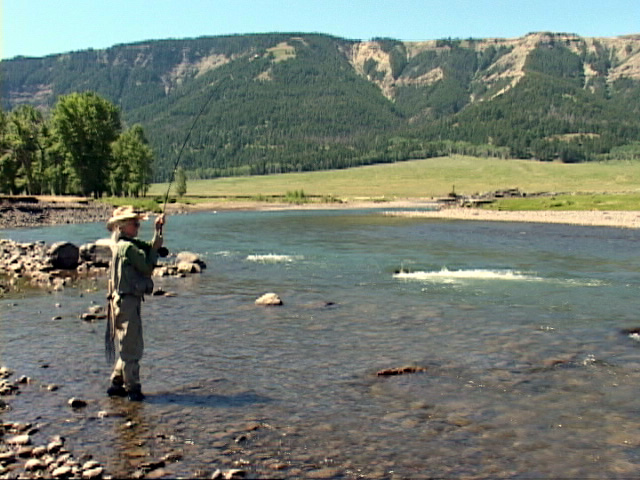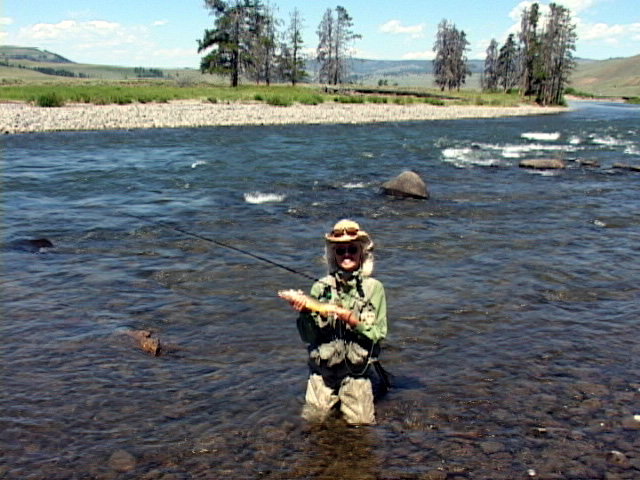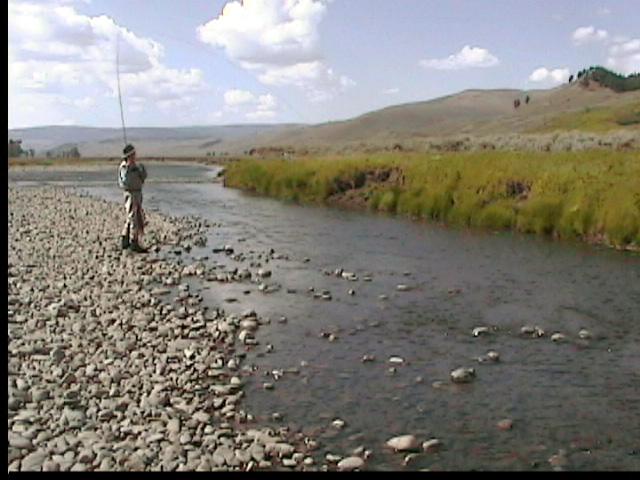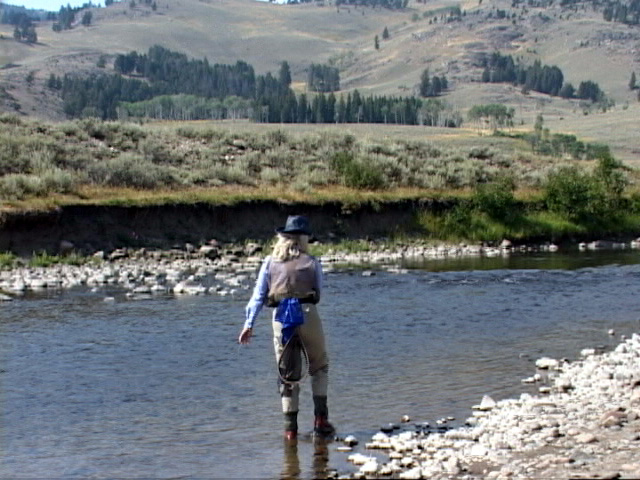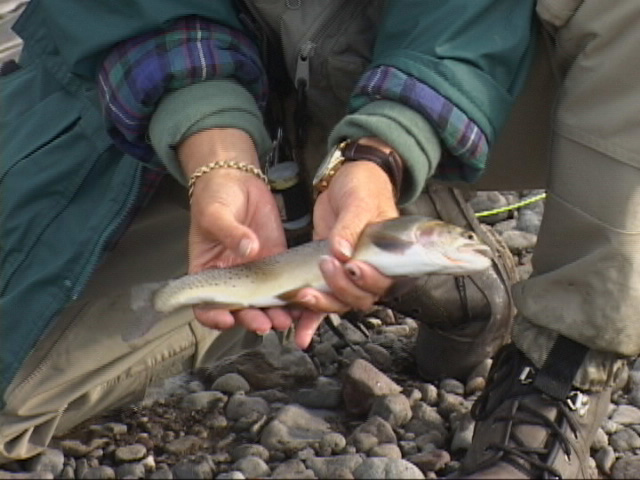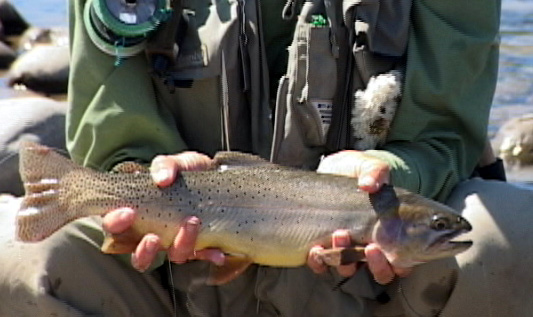
stars of the Lamar River. Angie
took over 20 cutthroats all about
the same size as this one in one
July day.
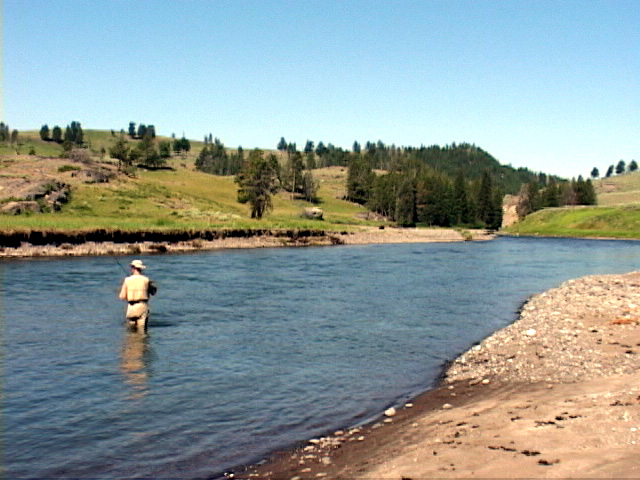
What a beautiful place to fish.
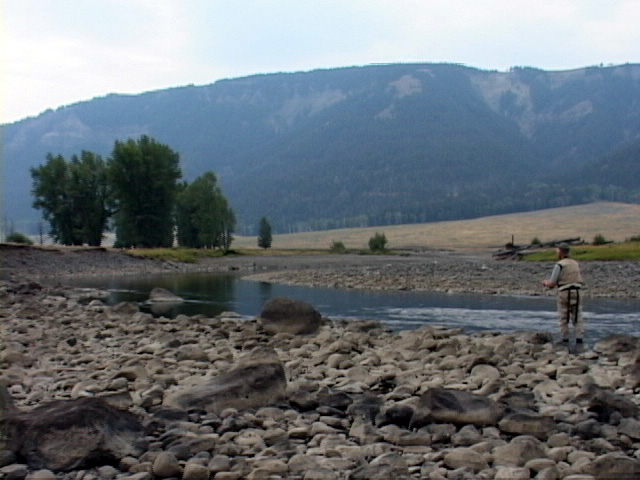
bison with one standing behind
too close for comfort. The fishing
was so good, he stuck it out
however.

It ‘s rare you get this close to them.
They spook easily.
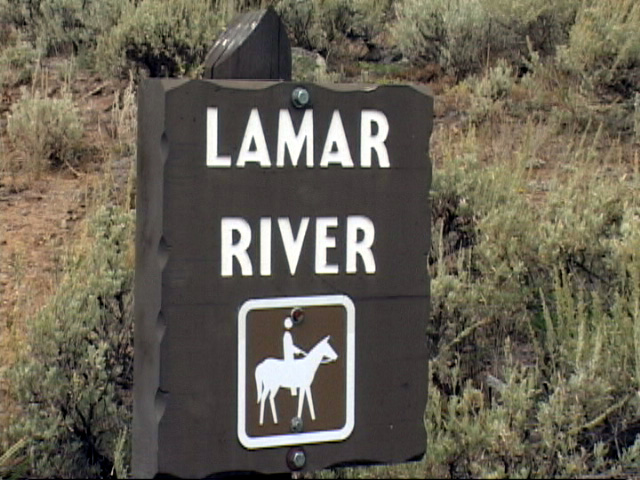
know you have come to a great
place in many respects.
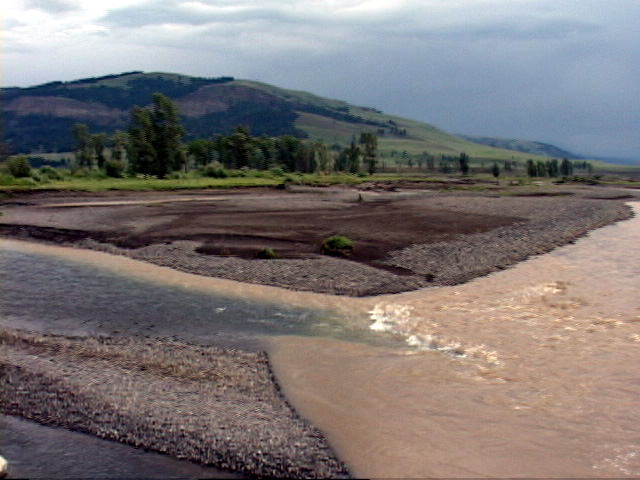
and the Soda Butte Creek on your
left flow together. Note how
muddy the Lamar is.
The Lamar River is located in the Northeastern portion of Yellowstone National Park. It is located in a beautiful valley that is almost beyond description and comprehension.
Upper Lamar River:
The river starts in the Absaroka Mountains and flows for over 30 miles before it comes near a road. This means this part of the stream is rarely fished. But that is not all bad because the trout in this part of the stream are smaller than those in the lower, more accessible portion of the stream. As with many freestone streams, the farther you travel upstream, the smaller you will find the fish.
The uppermost part of the Lamar River flows through a canyon and is very steep. The upper portion must be reached by hiking in or by horseback trips. Campsites are available along the stream. The total length of the stream is over 43 miles long.
Soda Butte Creek to the Canyon:
The Lamar River picks water from the Soda Butte Creek, one of its two largest tributary streams. From there through a huge wide open valley, a distance of about 7 miles, the Lamar River is accessible from the Northeast Entrance Highway.
This is the heaviest fished section of the Lamar but even so, the fishing is usually great. The stream has some large boulders and plenty of riffles, runs and lots of pocket water.
Trout in this section and the lower canyon sections are mostly cutthroats averaging 9 to 14 inches with some over 18 inches. They may be a few rainbows and cutbows on the lower end of the Lamar near its confluence with the Yellowstone River.
Canyon Section:
Below the large meadow section, the river heads into a canyon portion that is about 2 miles long that can be accessed at the head of the canyon. The stream gradient increases and there is a lot of fast, pocket water through the canyon. This section has some huge boulders on its banks and in the stream and access is difficult in places. The trout in this section are smaller than those in the meadows as a general rule.
Canyon Section to Yellowstone River:
The Northeast Entrance Road crosses the Lamar just below the canyon. For the next 5 miles, the stream leaves the road and passes through a section of open hills and then the heads into another canyon before flowing into the Yellowstone River. Slough Creek, another large tributary of the Lamar River, empties its water into the Lamar below the bridge. Slough Creek is covered elsewhere as a major stream.
This section of the Lamar River must be hiked into. There are several ways to get there. One is at the VIP pullout area at the intersection of Slough Creek Road and the Northeast Entrance Road located 6 miles east of Tower Junction. You can fish down the Lamar River from there using an old roadbed that is now a trail.
Two and one-half miles east of Tower Junction on the Northeast Entrance Road you will find the Lamar Bushwack Trail It is one mile down an unofficial trail to the Lamar River. Another access is just across the Yellowstone River Bridge one mile east of Tower Junction. The trail leads north to the confluence of the Yellowstone River and the Lamar River. It is a half-mile hike.
Cache Creek:
Cache Creek is the first major tributary stream of the Lamar River. The cutthroat trout in Cache Creek average from 8 to 12 inches long. It can be accessed from the Lamar River Trailhead on the North East Entrance Road that follows Soda Butte Creek. It is a 3 mile hike to Cache Creek. Campsites are available on this stream.
Slough Creek:
Slough Creek is a major tributary of the Lamar River. See the Slough Creek page.
Comments:
If you have never fished this river, you are going to think you died and went to heaven when you visit the beautiful Lamar Valley. It is one of the most beautiful, wild places in the United States. Check to make sure there has been no recent heavy rains from thunderstorms upstream. The Lamar can muddy quickly and shutdown the fishing for a day or two when this happens.
Copyright 2012 James Marsh
